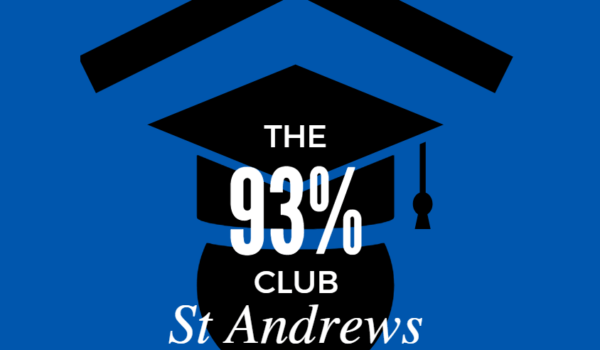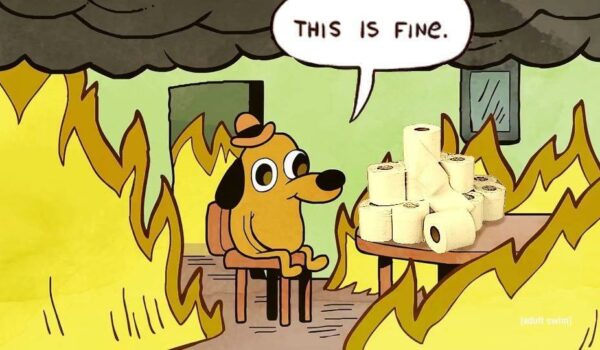This Friday, we will once more be met with a call to action by climate activist Greta Thunberg to continue striking on behalf of the dangerous levels of carbon dioxide continuing to enter into the atmosphere. Here in St Andrews, our very own Climate Action group will be holding a strike, starting in Salvator’s Quad at 11am and moving toward West Sands for speeches and a windfarm planting at noon. We’ve reached out to one of the organizers, Léa Weimann, and asked some questions concerning the strike.
Question 1: A strike is, of course, a very powerful symbol of distress. What is it that the climate activists of St Andrews are most worried about?
According to the International Panel on Climate Change (IPCC) we have just about 10 years left to significantly reduce global carbon emissions if we want to limit global warming to 2°C. That requires a massive societal shift and change in the way things on Earth are currently operating. Climate Change is already affecting people around the world so there is a real sense of urgency. The strikes are a way to build up citizen pressure on governments and leaders to act. It is about intergenerational climate justice. This is our future and we are not just going to give up on it. Furthermore, climate strikes are a really powerful way to bring people together and it is incredible to be part of that energy and united sense of purpose. So yes, it is a symbol of distress but also a symbol of hope to come together and create a movement for change.
Question 2: Climate Action St Andrews led a separate strike earlier in September, to draw a line in the sand and join in solidarity with Greta Thunberg’s call to action. Does this strike want to achieve different goals, or come at any different angles, from earlier this autumn?
This is the 4th global climate strike organised by Climate Action St Andrews this year which of cause stands in solidarity with Greta Thunberg’s global Fridays for Future movement but we also want to make it relevant to St Andrews. Climate Action St Andrews is not just about going out onto the streets to strike but also implementing changes locally. That is why this climate strike in particular is focusing on renewable energy solutions and the Kenly Windfarm. Kenly is a University project that could make the University carbon neutral and can leave a legacy for sustainability in St Andrews. That is why we have teamed up with Amnesty St Andrews to promote Kenly windfarm and stand in solidarity for local changes. Furthermore, we are also collaborating with the St Andrews Student Volunteer Service (SVS) for a big tree planting event following the strike on Saturday the 30th of November. The call for this Friday’s strike is to “follow the winds of change” to signal that we are ready for change and we want action not just warm words.
Question 3: There’s been a lot of discussion on campus in the wake of the last protest about whether the impact of striking in a small town is a practical strategy for climate alarmists (see The Stand’s op-ed, Climate (In)-Action). How would you defend your position against these skeptics?
If you think Greta Thunberg’s climate strikes and Extinction Rebellion’s actions have not made an impact this last year then you have not been in tune with the large societal shift that is happening. There are so many more people who are speaking up about Climate Change and it is shifting up in the agenda. Yes, change is still happening way too slowly, but it is happening, and the more people champion it the bigger the impact will be. There is always a critical number that needs to be mobilised before change happens and with a global problem like Climate Change that number has evidently not been reached yet. That is why everyone is needed, and everyone should join the climate strikes. When looking at historical movements like the suffragettes and civil rights movement it becomes clear that change is possible if enough people believe in it and champion it. Yes, it is not enough to go out striking once a week, every blue moon or four times a year. There is more to being an environmentalist and there is more to caring about the planet. We all need to take responsibility and action, but ultimately individual change is not enough to bring about the systematic global changes that we need. We need a combination. We need to show that we are ready for change. We need everyone to recognise the urgency and take action. We might just be one small Scottish town but maybe that exactly is our strength. On the 20th of September we formed a line of 1200 people on West Sands. We had the biggest climate strike St Andrews has ever seen. We have helped push climate change up the local agenda. Following our strike Stephen Gethins even submitted an Early Day Motion to the House of Commons in recognition of our efforts and to help push Climate Change up in the national political agenda. That just goes to show that even what we do up here in our little bubble is being watched at much larger scale especially in a town with a 600-year old internationally recognised University. What we do and do not do here matters greatly and to dismiss that would not only be a great mistake but also negligent.
Question 4: In a perfect world, what demands or changes would you expect the local community of the university, the town, or the wider Fife district to tackle?
Climate Change needs to be at the top of the political agenda. It needs to be considered in every decision that is taken. We need to build resilience and foster problem-solving. The University has a massive impact and a massive potential for leveraging change and becoming a sustainability leader. I know that they are already very committed to sustainability and it is great to see a response to this global movement and urgency to do more. However, in a time of Climate Emergency there is always scope for improvement. Same goes with Fife Council. It is great that they have declared a Climate Emergency and pledged their support to action, but we need more concrete goals and solutions. There are so many sustainability issues that can and need to be addressed. However, for this climate strike our focus is on renewable energy and changing our fossil fuel system. It can’t be that the Ministry of Defence is blocking the building of windfarms simply because they can. Climate Change is also a security issue and if want to have a future everyone needs to stand up for change no matter how uncomfortable it is.
Question 5: If students have class or other obligations during the strike, what other ways would they be able to show their discontent, or get involved in climate activism here in St Andrews?
Everyone who can – should be joining the strike. We are here studying so hard for a future that we do not even know will exist. What we do and don’t do now will have an impact on our future. However, for those who really cannot join us we also have the initiative of wearing RED on Friday the 29th of November for the Climate Emergency as a way to show your support of the action. For everyone who wants to get involved – get in contact with Climate Action St Andrews and help shape the way and mission forward. Don’t just complain about all the things that are wrong in the world but actually go and DO something about it. Furthermore, climate activism and environmentalism will look differently for everyone so get involved in the things you are passionate about and you care about. Ultimately that is what it is about: to care is to act. Let’s stand together for climate action.
Follow the winds of change.
-Léa Weimann, 3rd year SD and IR student and co-founder of Climate Action St Andrews








Comments